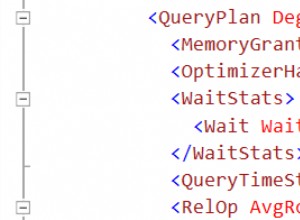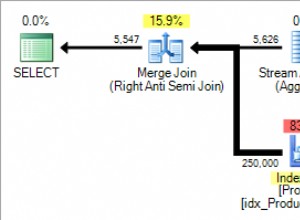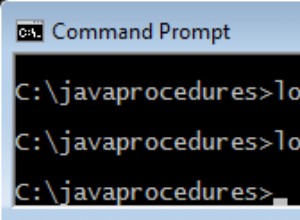Esempio di configurazione:
create table my_table(id int, data jsonb);
insert into my_table values
(1,
$${
"type": "a type",
"form": "a form",
"contact": {
"name": "a name",
"phone": "123-456-78",
"type": "contact type",
"parent": {
"id": "444",
"type": "parent type"
}
}
}$$);
La query ricorsiva esegue jsonb_each() per ogni oggetto json trovato a qualsiasi livello. I nuovi nomi delle chiavi contengono il percorso completo dalla radice:
with recursive flat (id, key, value) as (
select id, key, value
from my_table,
jsonb_each(data)
union
select f.id, concat(f.key, '.', j.key), j.value
from flat f,
jsonb_each(f.value) j
where jsonb_typeof(f.value) = 'object'
)
select id, jsonb_pretty(jsonb_object_agg(key, value)) as data
from flat
where jsonb_typeof(value) <> 'object'
group by id;
id | data
----+------------------------------------------
1 | { +
| "form": "a form", +
| "type": "a type", +
| "contact.name": "a name", +
| "contact.type": "contact type", +
| "contact.phone": "123-456-78", +
| "contact.parent.id": "444", +
| "contact.parent.type": "parent type"+
| }
(1 row)
Se vuoi ottenere una vista piatta di questi dati puoi usare la funzione create_jsonb_flat_view() descritto in questa risposta Appiattire le coppie chiave/valore aggregate da un campo JSONB?
Devi creare una tabella (o vista) con jsonb appiattito:
create table my_table_flat as
-- create view my_table_flat as
with recursive flat (id, key, value) as (
-- etc as above
-- but without jsonb_pretty()
Ora puoi usare la funzione sul tavolo:
select create_jsonb_flat_view('my_table_flat', 'id', 'data');
select * from my_table_flat_view;
id | contact.name | contact.parent.id | contact.parent.type | contact.phone | contact.type | form | type
----+--------------+-------------------+---------------------+---------------+--------------+--------+--------
1 | a name | 444 | parent type | 123-456-78 | contact type | a form | a type
(1 row)
La soluzione funziona in Postgres 9.5+, poiché utilizza la funzione jsonb introdotta in questa versione. Se la versione del tuo server è precedente, si consiglia vivamente di aggiornare comunque Postgres per utilizzare jsonb in modo efficiente.




